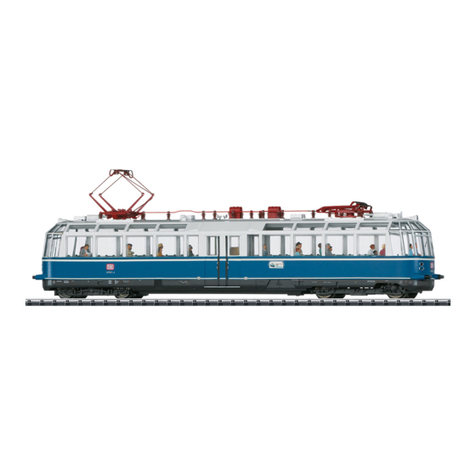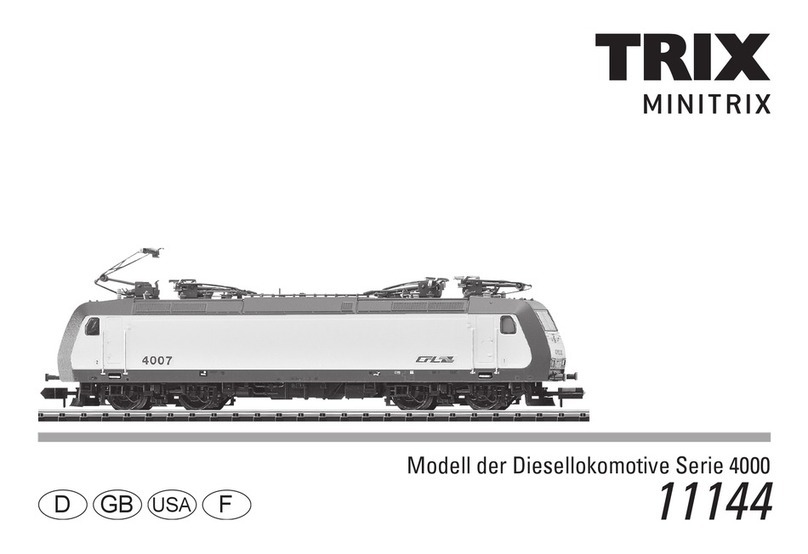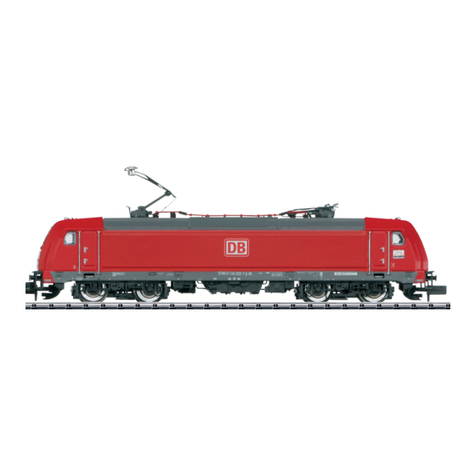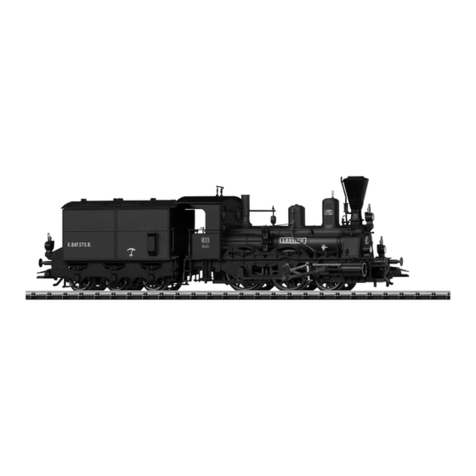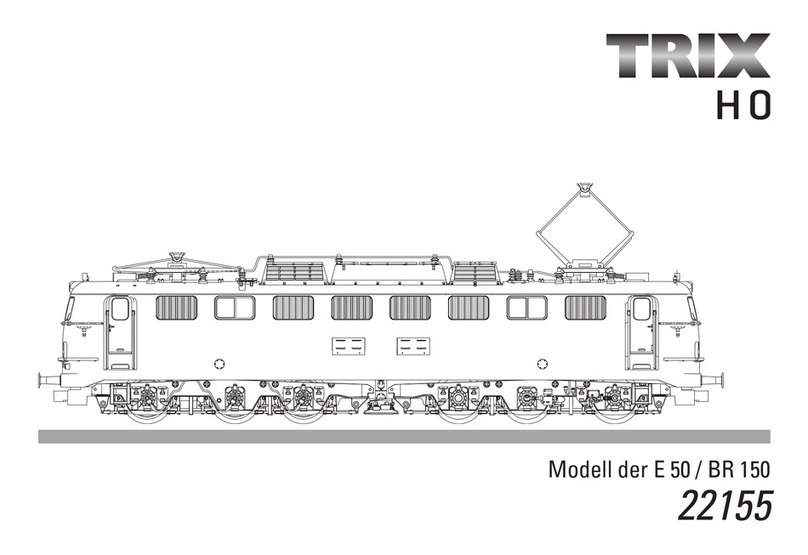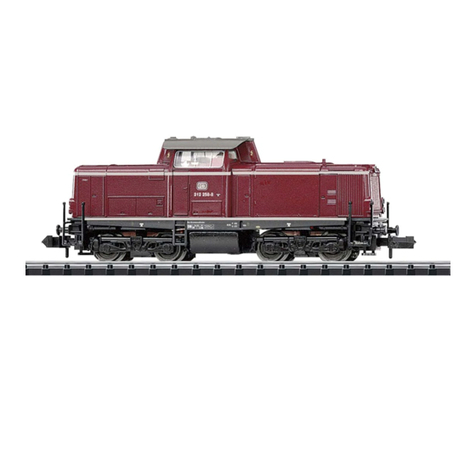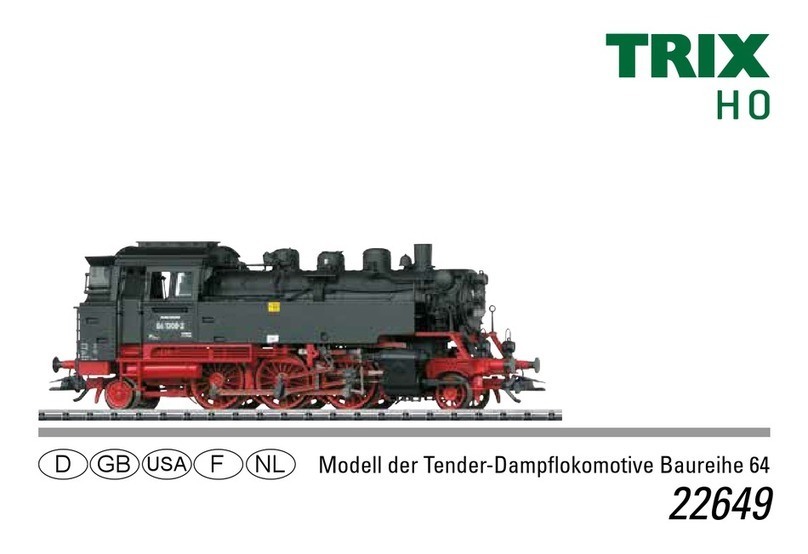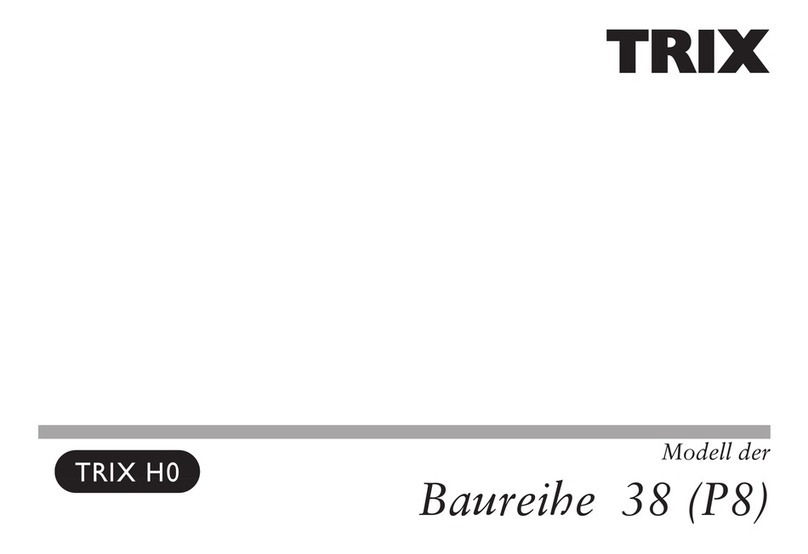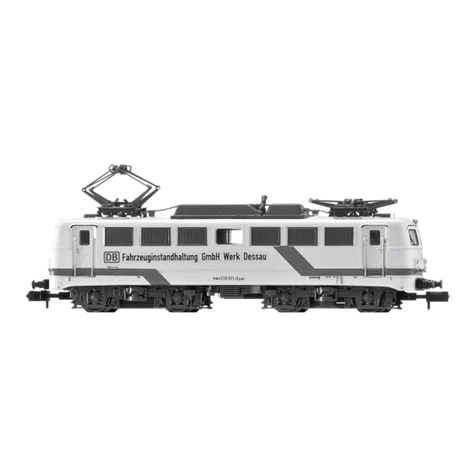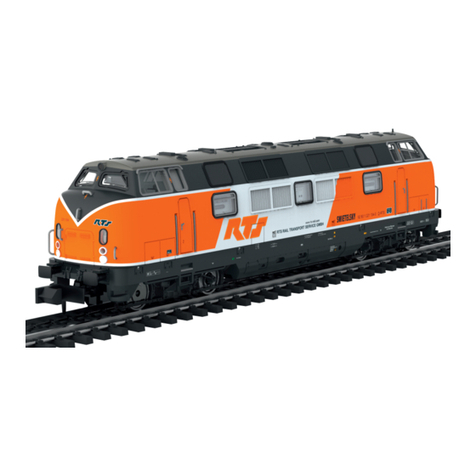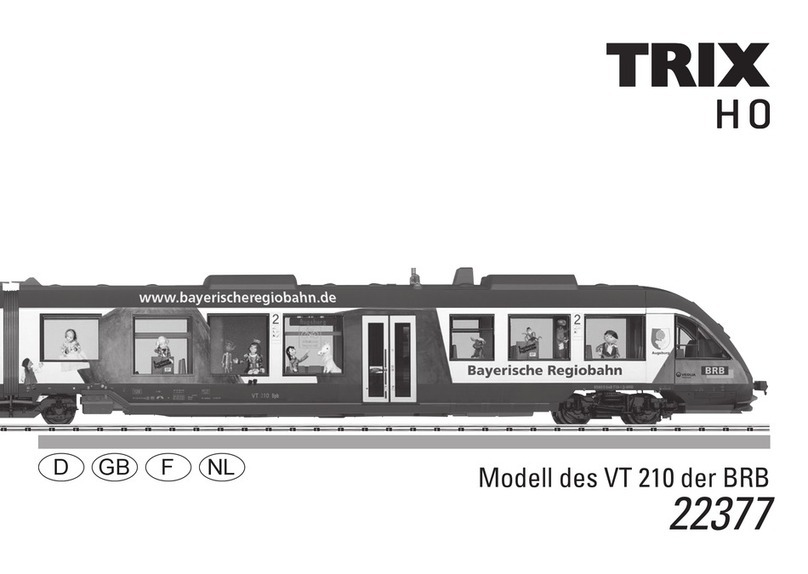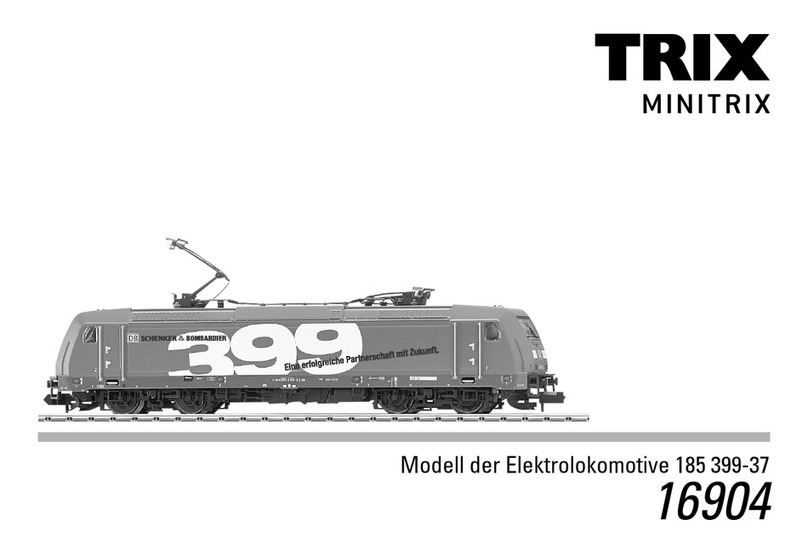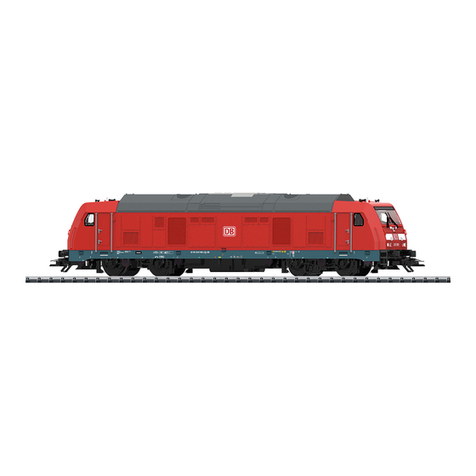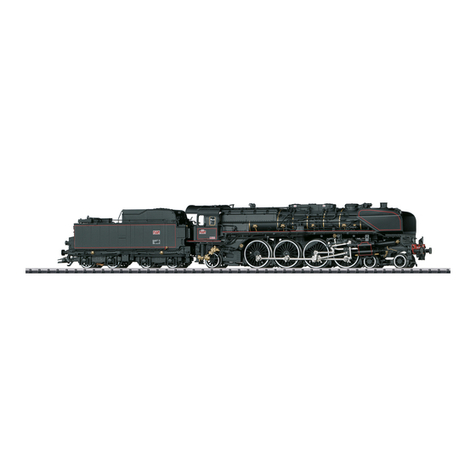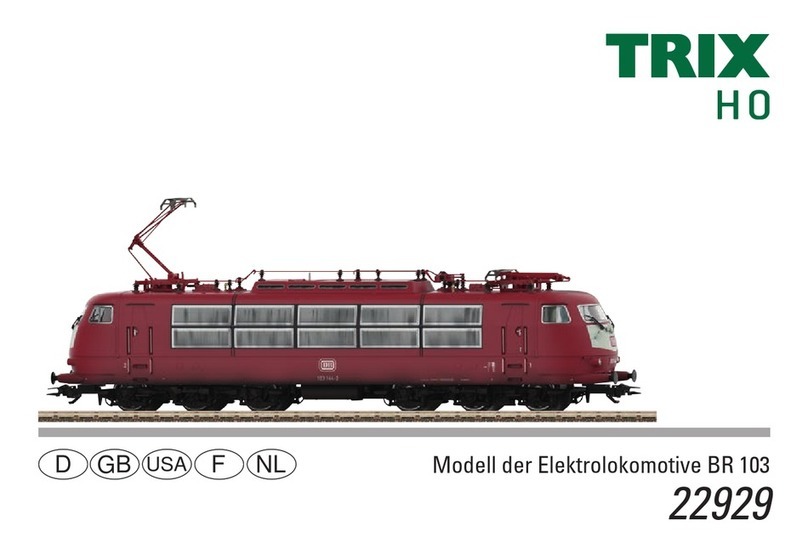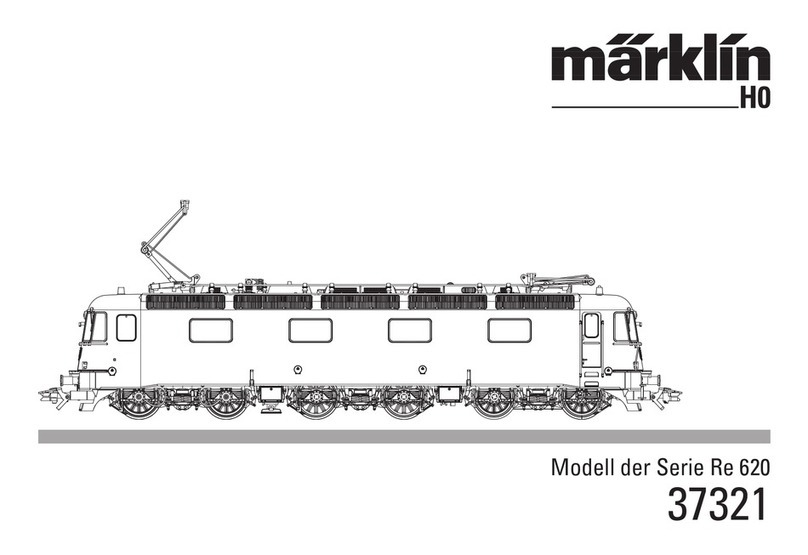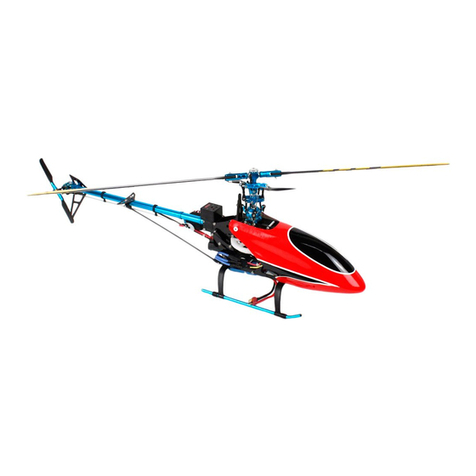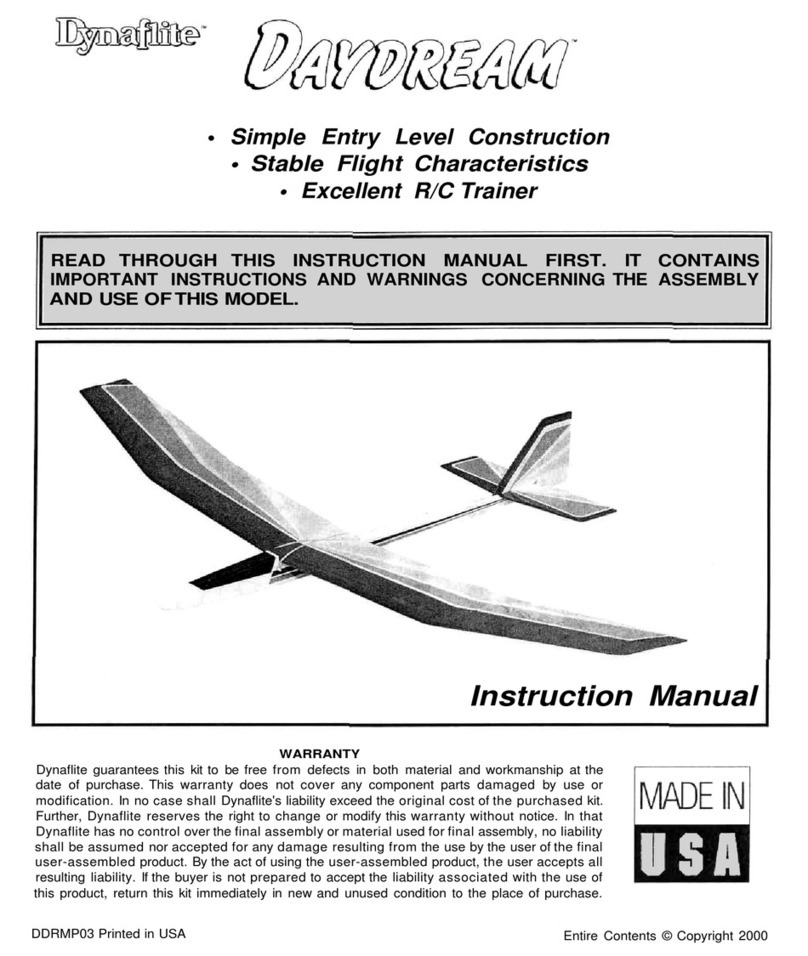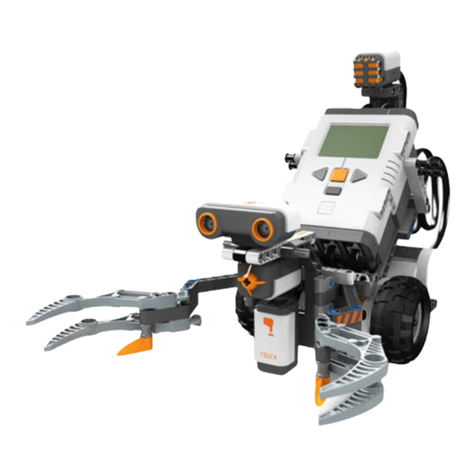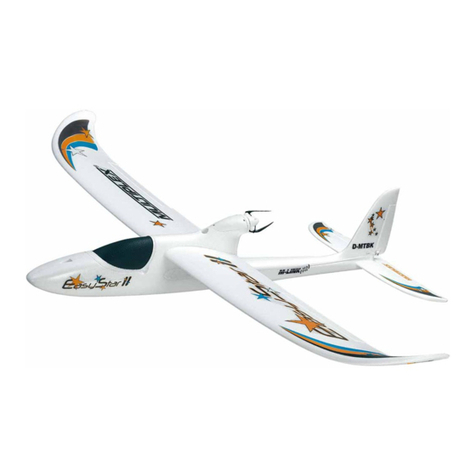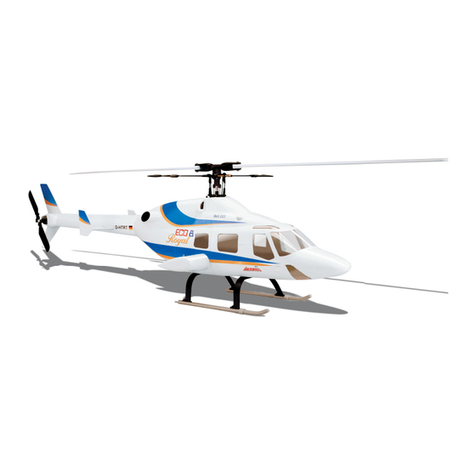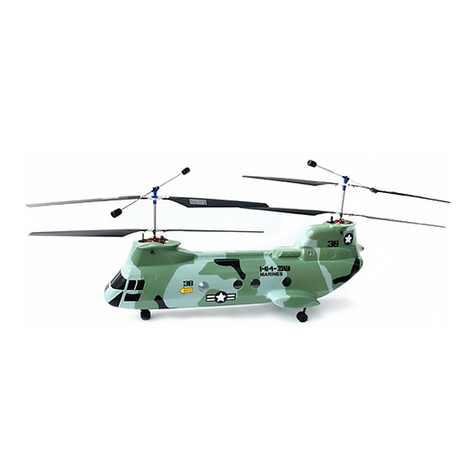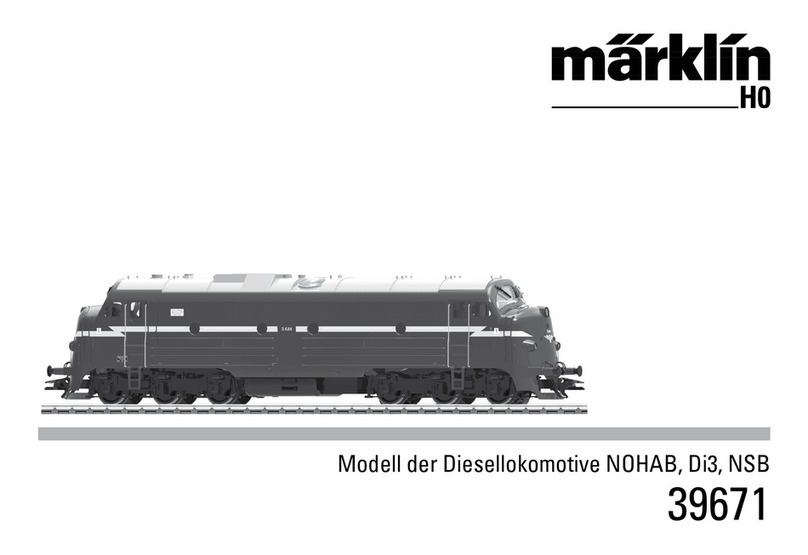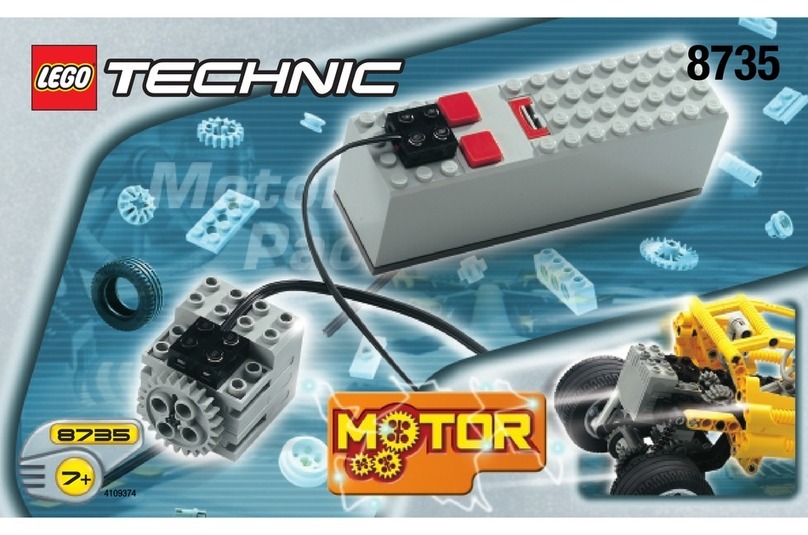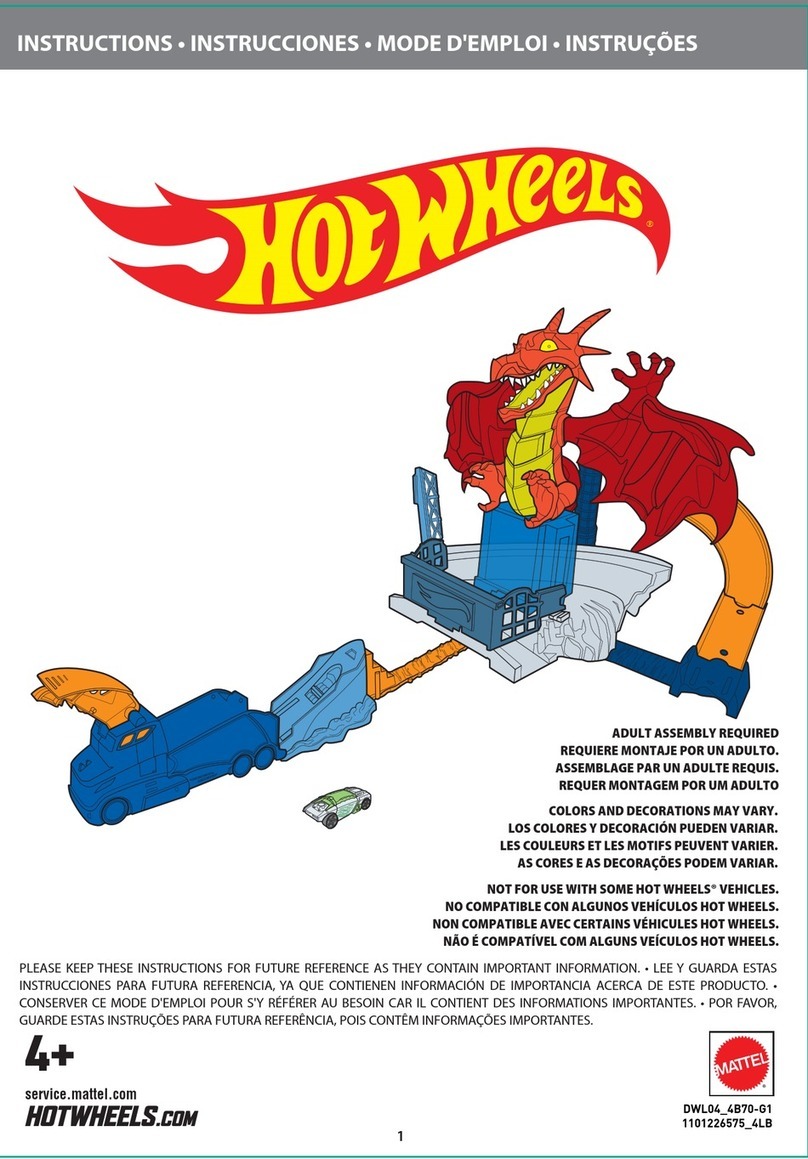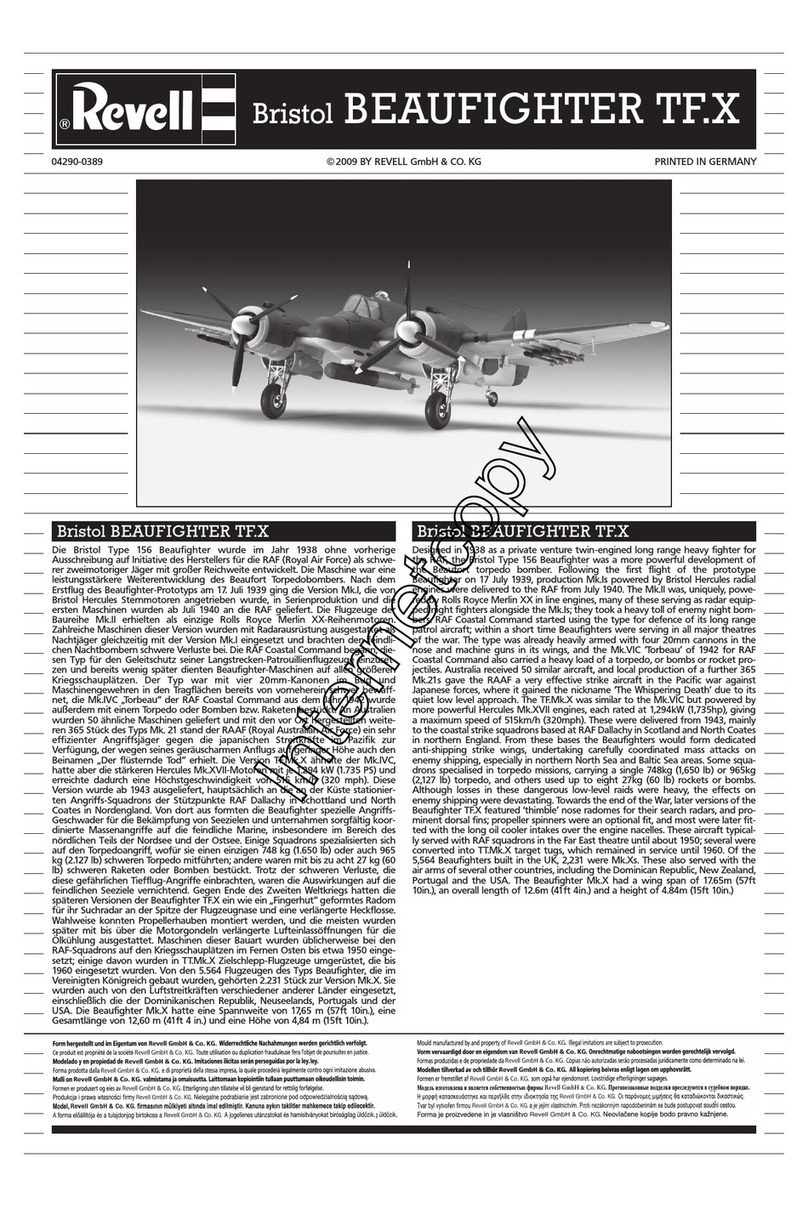
5
Informatie van het voorbeeld
Na de stichting van de Deutsche Bundesbahn was het be-
langrijkste doel van de jonge onderneming het verouderde
tractiepark te vernieuwen.
Voor de sneltreindienst accordeerde men na intensieve proe-
ven tot 5 voorserielocomotieven van de serie E 10.0 tot de
serie E 10.1 tot E 10.3, die vanaf 1956 in meerdere series 379
maal door de firma’s Krauss-Maffei, Krupp, Henschel-Werke
(mechanische deel) en SSW (Siemens-Schuckert-Werke),
AEG en BBC (elektrische deel) aan de Bundesbahn geleverd
moesten worden. Een gelaste bakopbouw met enkelvoudige,
later dubbele lampen en ventilatorroosters rustte op gelaste
draaistellen in een bakconstructie met draaitappen. Vanaf
de E 10 288 werd de elegantere ”Bügelfalten”-locbak van de
E 10.12 ook bij de normale E 10 gebruikt, die vervolgens als
BR E 10.3 ingedeeld werd. De E 10 kreeg ook de bij de voor-
serielocomotieven beproefde Gummiringfeder-aandrijving
en vier 14-polige tractiemotoren van het type WB 372, die
bij latere series zoals de BR 111 en BR 151 toepassing von-
den. De transformatoren, waarbij voor het eerst in Duitsland
standaard een hoogspanningsregeling gebruikt werd, zijn
met olie gekoeld, waaraan een schakelmechanisme met 28
rijtrappen aangesloten is. De 85 t zware, 16.490 mm lange en
maximaal 150 km/h snelle loc heeft een continu vermogen
van 3.700 kW.
In het eerste jaar was de E 10 de ruggengraat van het snel-
treinverkeer tot snellere, sterkere locs, zoals de BR E 03/103
en daarna de BR 101 hen de loef afstaken. Tegenwoordig
zijn de resterende machines in meerderheid in de regionale
dienst onderweg.
Informations concernant la locomotive réelle
Après la création de la Deutsche Bundesbahn, la principale
ambition de la jeune entreprise était de renouveler le parc de
véhicules devenu obsolète.
Pour le service de trains rapides, on se décida – après des
essais intensifs avec 5 locomotives de pré-série (série E 10.0)
pour la série E 10.1 à E 10.3, dont 379 unités devaient être
livrées à partir de 1956 à la Bundesbahn en plusieurs lots
par les firmes Krauss-Maffei, Krupp, Henschel-Werke (pour
la partie mécanique) ainsi que SSW (Siemens-Schuckert-
Werke), AEG et BBC (pour la partie électrique). Une caisse
soudée avec un, puis deux feux et des grilles d‘aération
reposait sur des bogies soudés en forme de caisson avec
un pivot. A partir de la E 10 288, l’élégante caisse à «pli» de la
E 10.12 fut également utilisée pour les E 10 normales, imma-
triculées alors dans la série BR E 10.3. La E 10 fut également
dotée de la transmission à ressorts et courroies en caout-
chouc – qui avait fait ses preuves sur les locomotives de
pré-série – ainsi que de quatre moteurs à 14 pôles du type
WB 372, également utilisés sur des séries ultérieures telles
que la BR 111 et la BR 151. Les transformateurs, sur lesquels
fut utilisée pour la première fois de série en Allemagne une
commande à haute tension, sont dotés de radiateurs à huile,
et un dispositif de commutation avec 28 crans de marche y est
relié. Cette locomotive pesant 85 t, mesurant 16 490 mm de long
et pouvant atteindre une vitesse de 150 km/h, affiche une puis-
sance continue de 3700 kW.
Au cours des premières années, la E 10 représentait l’épine
dorsale du trafic de trains rapides jusqu’à ce que des locomo-
tives plus rapides et plus puissantes, telles que la BR E 03/103,
puis la BR 101 lui volent la place. Aujourd’hui, les machines
restantes sont pour la plupart affectées au trafic régional.


